-
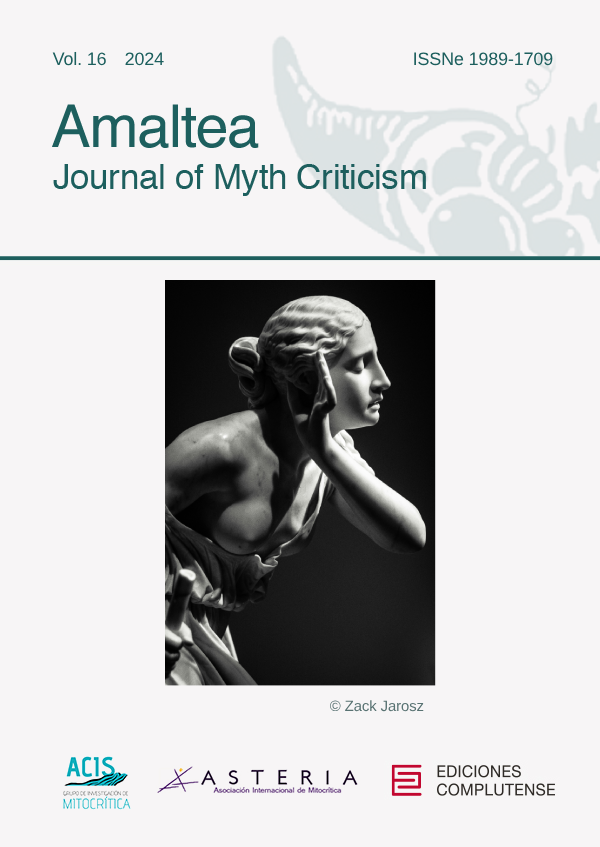 Vol. 16 (2024)
Vol. 16 (2024)
This issue includes various studies that reinterpret the reception of myths in contemporary culture. It compares "Crossed: Wish You Were Here" with "Oedipus Rex," linking the myth of ancestral sin to current concerns. Medea, as depicted in film, is understood as a symbiosis of myth and symbolic archetype. Emily Hauser revisits Atalanta in "For the Winner" from a feminist perspective. Madhavi S. Mahadevan’s "Bride of the Forest" and the poetry of Chantal Maillard reimagine myths based on motherhood, postfeminism, and contemporary compassion. In addition, criteria are proposed to classify myths in epic fantasy video games, and the mythology present in "World of Warcraft" and "Dark Souls III" is examined.
-
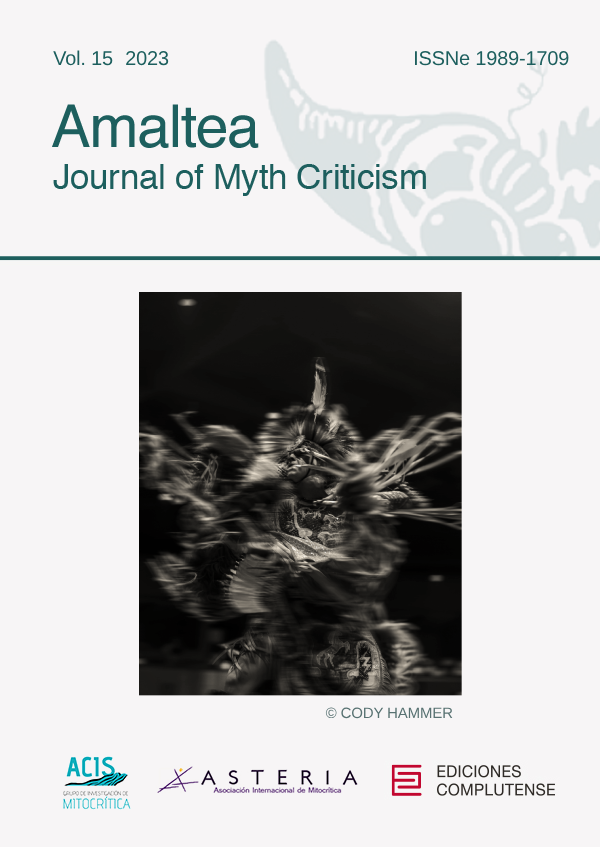 Vol. 15 (2023)
Vol. 15 (2023)
The studies in this issue examine myth in various contexts. "Nationhood, the Arthurian Myth, and the (De)Construction of Mythical England in Ben Wheatley’s Kill List" explores the relationship between the Arthurian myth and national identity. "La literatura como mitología infraurbana del mal. Sábato: 'Informe sobre ciegos', en Sobre héroes y tumbas (1961-1993)" presents Sábato’s work as an urban mythology of evil. "Alejandro Magno de Oliver Stone: el mito de Proteo y la postmodernidad" connects the filmic representation to the mythical figure within a postmodern framework. "The multiple facets of the coyote as a Trickster in Oral Tradition and Art" portrays the coyote as a complex archetype in oral tradition and art.
-
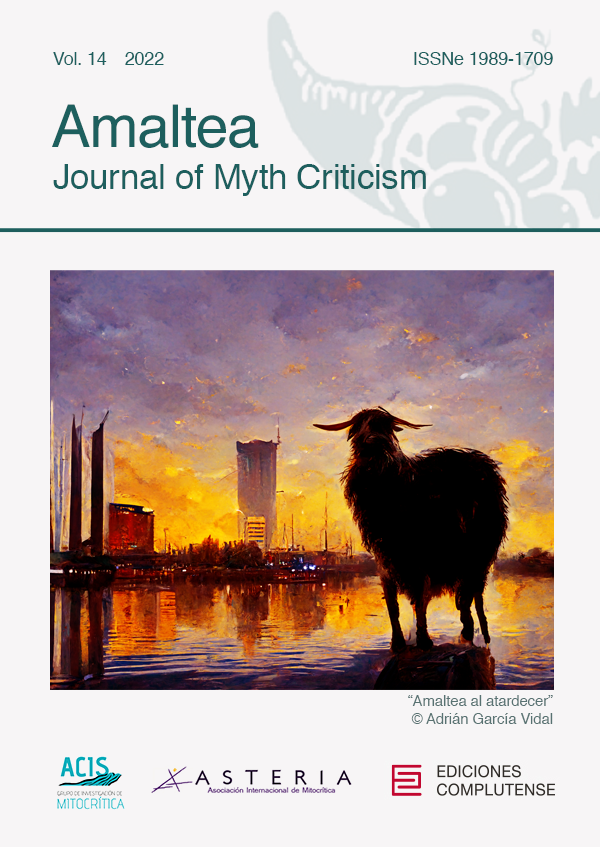 Vol. 14 (2022)
Vol. 14 (2022)
Since 2008, Amaltea, Revista de Mitocritica has been offering its readers an annual issue at “set periods”. This periodicity responded to the inertia of journals published in paper format: the constrictions of the printing press made it necessary to respect very long deadlines from the reception to the publication of the articles. Digitization has made our academic world much more dynamic: freed from expiring deadlines and printing limitations, from now on Amaltea will be able to publish issues on a “continuous” periodicity.
-
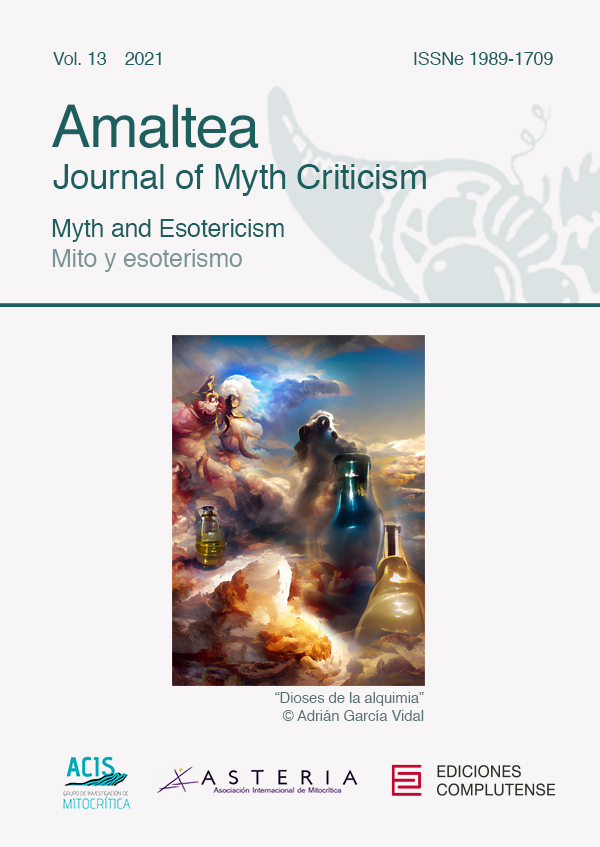 Myth and Esotericism
Vol. 13 (2021)
Myth and Esotericism
Vol. 13 (2021)Throughout time, esotericism undergoes multiple evolutions: first, a recast during Renaissance humanism; then a flowering during the Enlightenment and Romanticism; finally, through contemporary mysticisms. The articles in this issue talk about the relationship between myths and these types of esotericism.
-
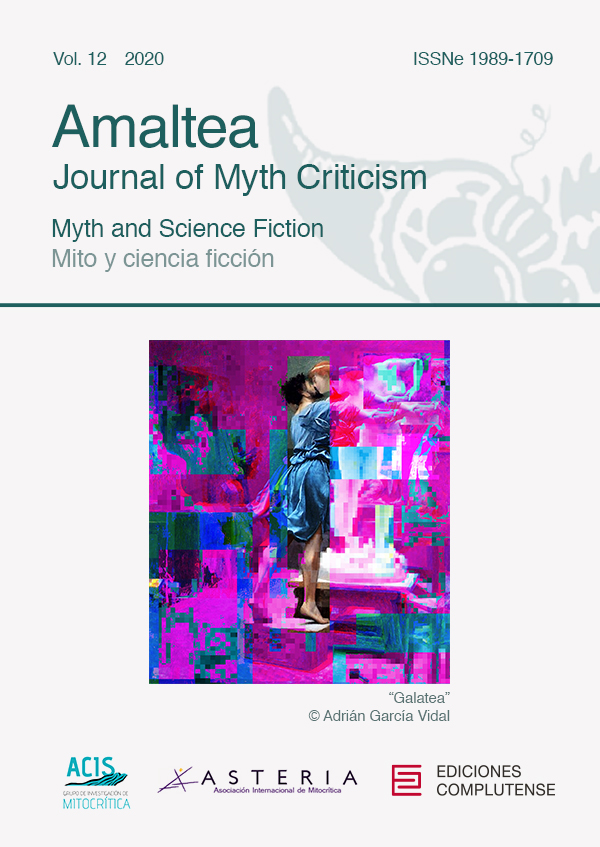 Myth and Science Fiction
Vol. 12 (2020)Myth does not circumvent explanation; indeed, the yearning for understanding is part of the backbone of myth. Nor does science fiction elude explanation, determined as it always is to understand the intricate mechanisms of the world. They each do it in their own way, but with the same immediate purpose. It is precisely there that myth and science fiction approach each other.
Myth and Science Fiction
Vol. 12 (2020)Myth does not circumvent explanation; indeed, the yearning for understanding is part of the backbone of myth. Nor does science fiction elude explanation, determined as it always is to understand the intricate mechanisms of the world. They each do it in their own way, but with the same immediate purpose. It is precisely there that myth and science fiction approach each other. -
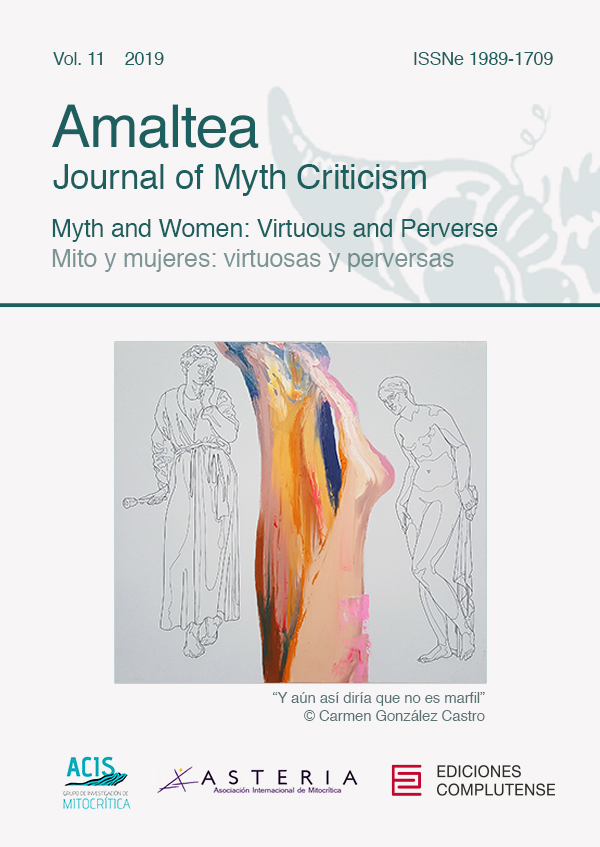 Myth and Women: Virtuous and Perverse
Vol. 11 (2019)
Myth and Women: Virtuous and Perverse
Vol. 11 (2019)For reasons which various sciences have explained for many decades, women have been historically considered a paradigm of virtue or perversion. In literature, art allergic to transparency, these feminine stereotypes have often been conveyed through mythical stories. In this issue of Amaltea, our authors study the relationship between myth and women, paying particular attention to the moral perception of the latter (sometimes virtuous, at other times perverse), in literature and art since 1900.
-
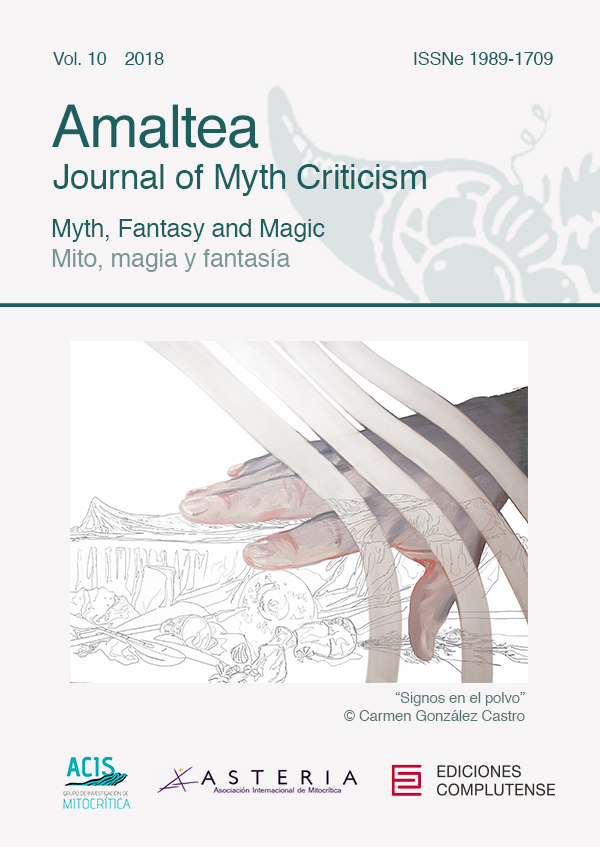 Myth, Fantasy and Magic
Vol. 10 (2018)
Myth, Fantasy and Magic
Vol. 10 (2018)Magic exteriorizes mankind's irrepressible desire to transform the world, not through work, but through extraordinary means. By the use of white magic (alchemy), mankind aspires to know the secrets of the world, to find the Philosopher's Stone. By the use of black magic, man makes a pact with the devil to gain power, pleasure or self-affirmation. Myth and fantasy are not opposed concepts, but they are diverse. It falls on the hands of the researcher to distinguish between the varied forms of transcendence (sacred or cosmic in myth, plastic or natural in fantasy) and between the different kinds of timeframe (absolute in myth, relative in fantasy).
-
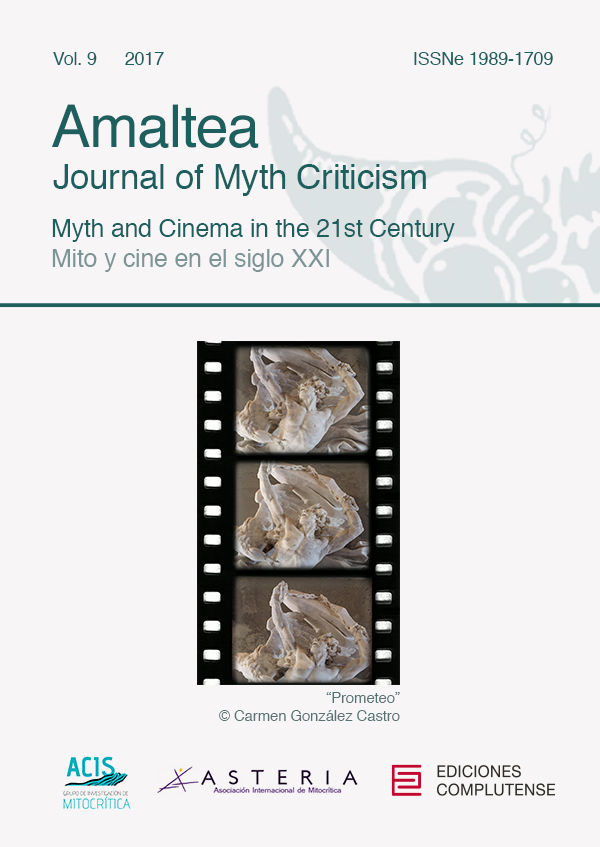 Myth and Cinema in the 21st Century
Vol. 9 (2017)
Myth and Cinema in the 21st Century
Vol. 9 (2017)With its narrative structure, cinema seems to be the ideal form of art to represent myth: it includes the advantages of visual, scenic and musical arts. It becomes necessary to conduct an in-depth study, both theoretical and practical, of the spaces that mythology occupies in films, the contributions of cinematic technologies to mythical tales, and how men and women's perceptions of myth have changed today through the relationship between myths and movies.
-
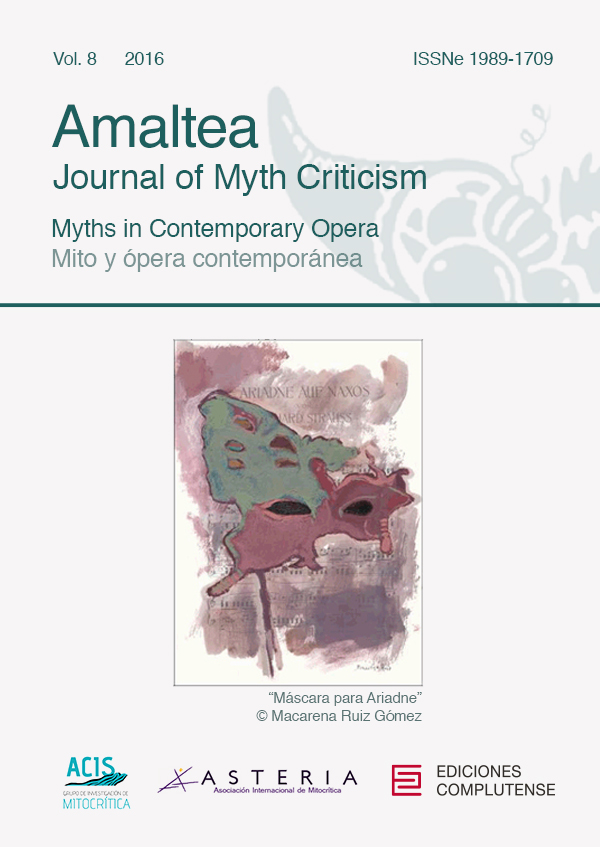 Myths in Contemporary Opera
Vol. 8 (2016)
Myths in Contemporary Opera
Vol. 8 (2016)Myth dynamism is evident in the dialogue established between all arts and literature. Many artistic manifestations are literary myths retellings: tales retold in a different manner. Issue 8 of Amaltea addresses these myths in contemporary opera, where the fusion between music and literature acquires an explanatory and argumentative capacity that surpasses the limits of literature. The result of the transference of literary texts to an operatic medium incorporates the elements, advantages and "disadvantages" of opera, providing an interesting opportunity to study myths retellings.
-
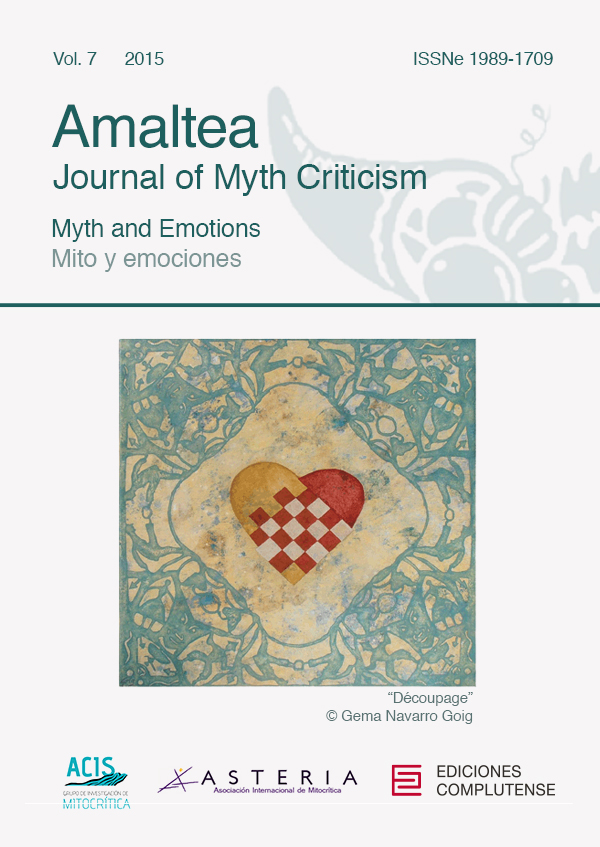 Myth and Emotions
Vol. 7 (2015)
Myth and Emotions
Vol. 7 (2015)Virgil recounts how Eurydice died of a hydrus or water-serpent’s bite. Afflicted and seeking consolation in song, Eurydice’s husband, the poet Orpheus, entered the Underworld through the caverns of Cape Tenarus, searching for her. The narrative penned by Virgil, as well as that of his successor Ovid, appears to contradict rational logic, since it seems unreasonable, going beyond death to search for someone. Yet emotional logic readily accepts Orpheus’s descent. In fact, there is nothing more natural than wanting the return of one’s beloved, and undertaking any means—even an unnatural one—to make it happen.
-
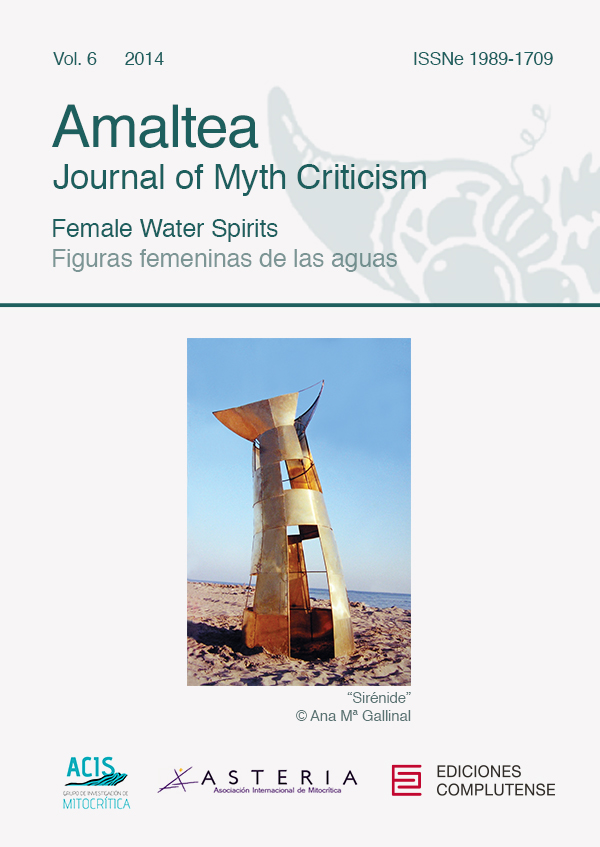 Female Water Spirits
Vol. 6 (2014)
Female Water Spirits
Vol. 6 (2014)Female water spirits have always haunted our imaginations, be it under the form of naiads, nereids, undines or mermaids. Far from receding into oblivion and retreating to ancient, medieval or Romantic shores, they continue to be a source of literary and artistic inspiration. Issue 6 of Amaltea is devoted to these creatures.
-
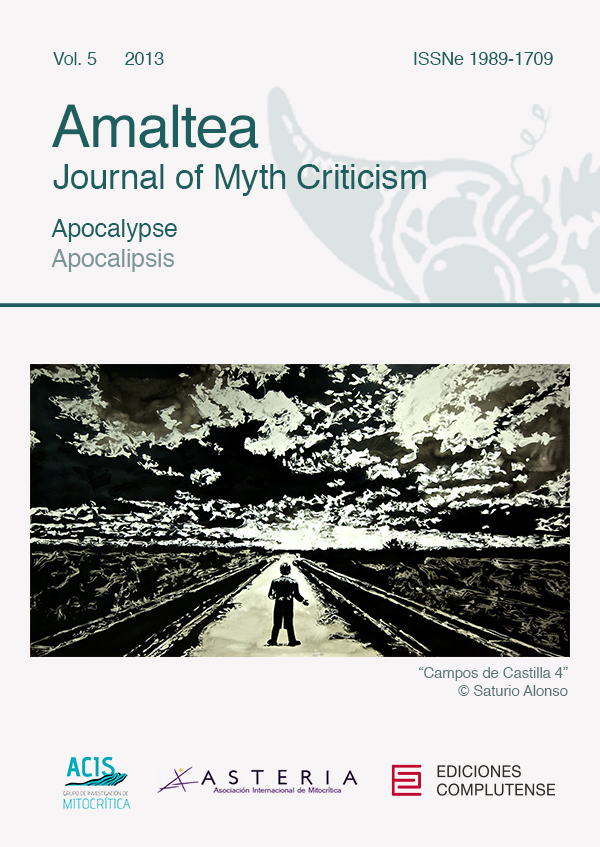 Apocalypse
Vol. 5 (2013)
Apocalypse
Vol. 5 (2013)Both eschatological and cosmogonic myths have been relevant in Judeo-Christian, Eastern, and American cultures throughout history. Of particular note are representations of traumatic ends, considered either from a real or allegorical perspective, such as the flood, the final judgment, the Anti-Christ, and the empire of chaos, in contrast with Messianic myths. Aesthetic representations of the apocalypse may be found in different fields, ranging from biblical literature, which is at its origin, to science fiction, as this issue illustrates.
-
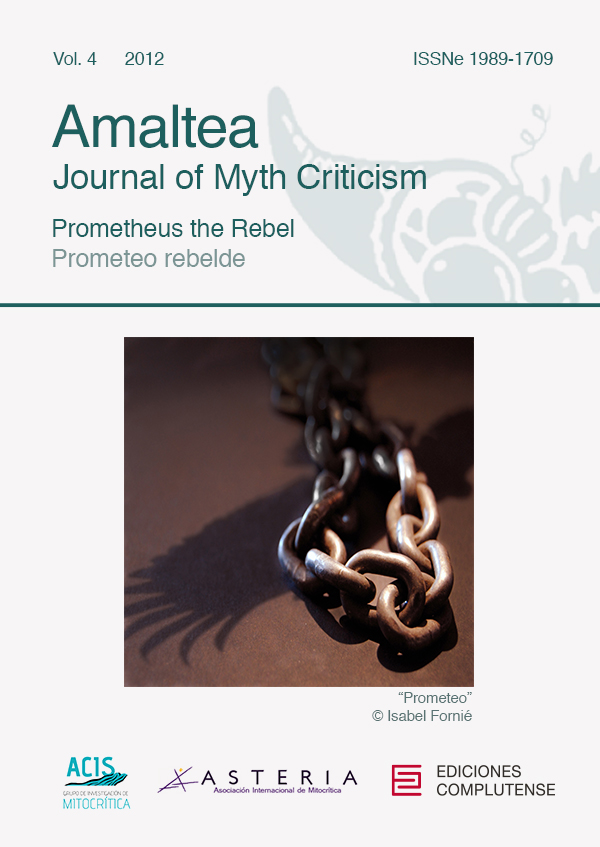 Prometheus the Rebel
Vol. 4 (2012)
Prometheus the Rebel
Vol. 4 (2012)This myth, both in its Prometheus Pyrophoros and Prometheus Plasticator variants, has been controversial throughout the ages. By the 19th century, Prometheus had become a symbol: that of oppressed mankind striving to break its chains. Authors like Goethe (Prometheus) or Percy B. Shelley (Prometheus Unbound) were seduced by the strength of this mythological character, whose transgression was also innovatively treated during the same century in Mary Shelley's Frankenstein; or The Modern Prometheus.
-
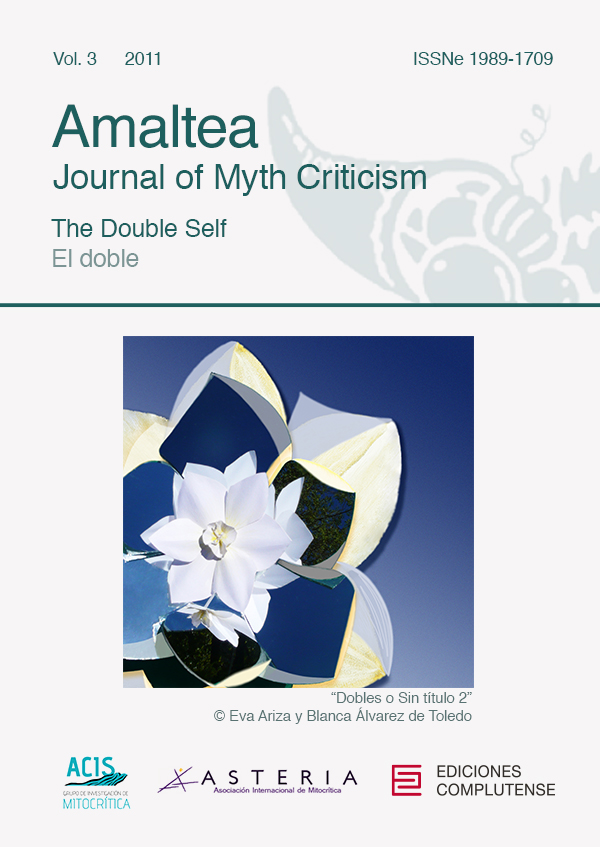 The Double Self
Vol. 3 (2011)
The Double Self
Vol. 3 (2011)Since Jean Paul Richter used the term Doppelgänger in Siebenkäs (1797), inserting this work in the tradition of the many classic versions of the duality ―Plato, Plautus, Shakespeare, Corneille, Goldoni...―, there have been many recreations of the double as modern myth, cultivated by distinguished authors such as Hoffmann, Poe, Dostoevsky, Maupassant, Stevenson, Oscar Wilde, Pirandello, Borges, Cortázar, Saramago and many others. The contributions of this number reflect the richness of the myth of the double self, one of the most recurrent and fruitful in universal literary history.
-
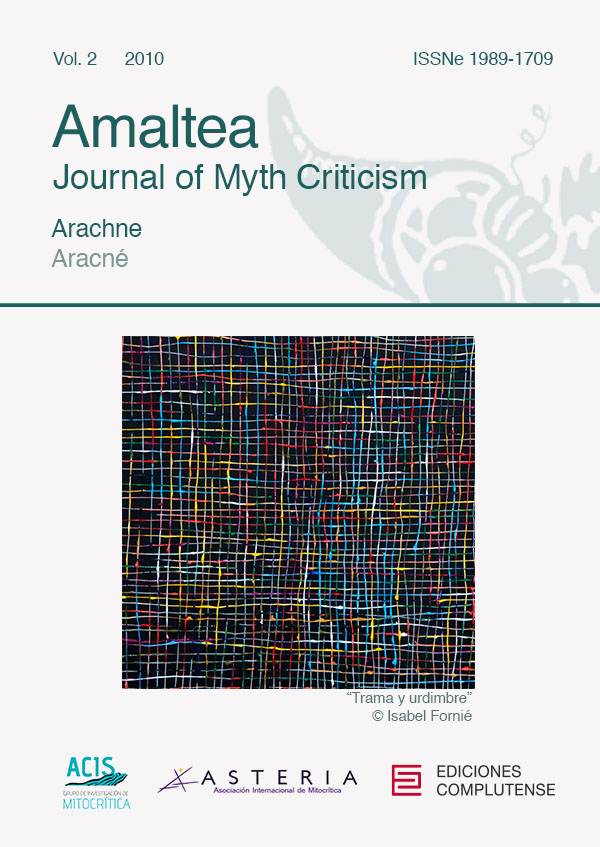 Arachne
Vol. 2 (2010)
Arachne
Vol. 2 (2010)Arachne’s metamorphosis at the hands of Athena has become, in its own right, a model of the mythical subject of transformation. Perhaps driven by her craving for vengeance, the goddess decides to save young Arachne in the last minute, just when the horrified victim was about to commit suicide by hanging herself with her own rope. The different interpretations the myth has arisen through history have provoked numerous reflections about art and literature, more specifically, about the way in which artists express the actual power or punishment symbolized in the myth.
-
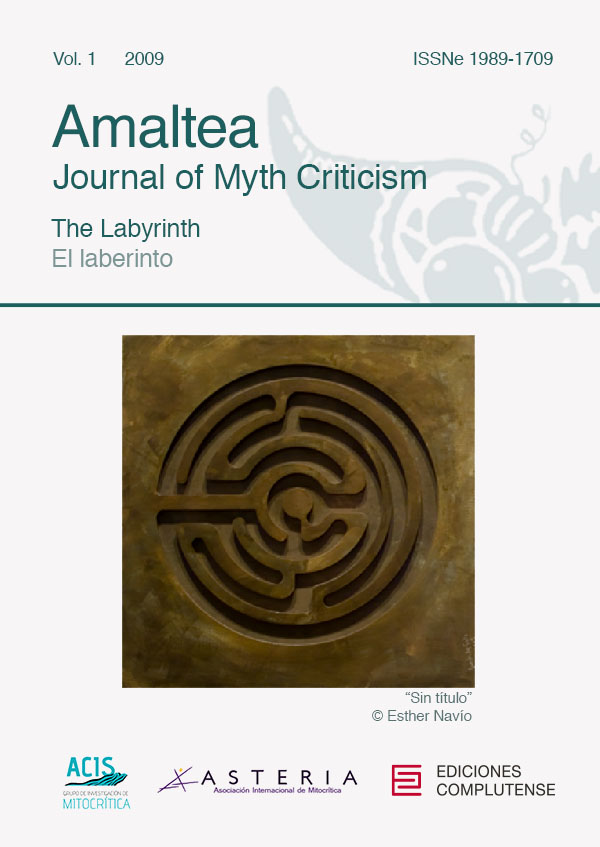 The Labyrinth
Vol. 1 (2009)
The Labyrinth
Vol. 1 (2009)The first issue of Amaltea aims to tackle the labyrinth’s myth reception in the contemporary Western literature: the infernal city, the fantastic dwelling, the criminal investigation or the metaliterary pretext; the labyrinth contains, as does its very structure, the thousand different paths taken by anthropological research today.
-
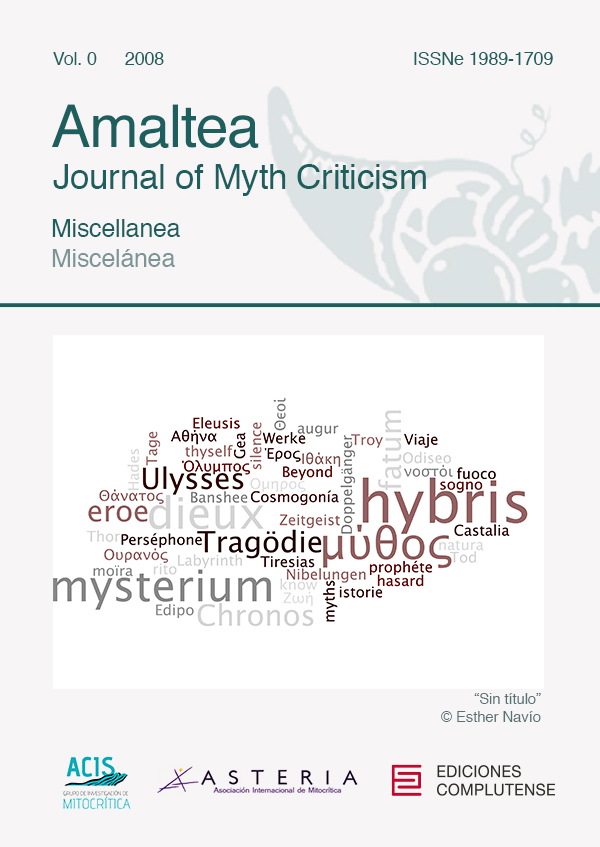 Miscellanea
2008
Miscellanea
2008As an exception, issue “0” of Amaltea contains only articles in Spanish. These come from lectures given at the Universidad Complutense de Madrid during the academic year 2007/2008, within the framework of a project subsidised by the Spanish Ministry of Innovation.
Language
Information
Select a number
Keywords
Make a Submission
Search
Amaltea. Revista de mitocrítica
e-ISSN 1989-1709 | ISSN-L 1989-1709
https://dx.doi.org/10.5209/AMAL
© 2025. Universidad Complutense de Madrid
Ediciones Complutense












